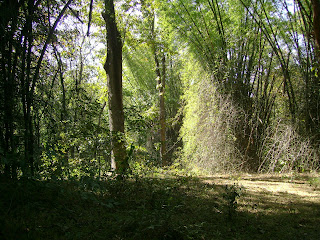Despite having the been-there,done-that feeling, Mysore has a lot more to offer than what meets the eye. My friend Anusha Vincent (http://daftnoosh.blogspot.in/) and I, in our first trip together, find that Mysore is full of twists, turns and tales...
She flows like a dream,she carries dancing rainbows on her sprightly sprays,she gushes with gusto out of dams,she is also the cause of national dispute,death,and destruction the fiery Cauvery is a force to reckon with.And,when we headed out to Mysore,this is what we sought to experience.
An arduous car journey later, we find ourselves in the old culture-seeped town of Mysore which to this day,maintains its old-world charm and peaceful ambiance. First up, we make our way to The Metropole (situated at the centre of the town, it was used as a resting place for the Maharajas English friends. Interestingly, this is the only heritage property that has retained its English name), to refresh our tired selves and fuel our empty tummies.As we enter the heritage property, we are transported to an age gone by the colonial times. You can almost envision the Maharajas and the Brits lounging about in the elegant wrought iron couches and divans, sipping on their evening cup of tea. Lunch consists of a typically Mysorean buffet.
 |
| (File pic) Brindavan Gardens.... and the Tipu Sultan portrait |
 |
| (File Pic) View from KRS dam |
 |
| (File pic) What else! That famous palace.... |
The dining area has an enviable collection of hunting trophies, tiger included (the area manager, Awasthi, tells us he had to go through a tedious process of getting permission from the Animal Welfare Board to do so) and not to forget, a 100-year-old painting of Tipu Sultan,which was acquired from a local.
Post lunch, we continue our journey towards the Brindavan Gardens, where we are scheduled to stay at the Hotel Royal Orchid Brindavan Garden, another heritage property (built in 1910) this one, to accommodate British engineers who routinely flew down to build the mighty KRS dam. A whiles rest later, we head out to the Brindavan Garden,which happens to be right at the foot of the hotel. The dancing fountain, which was once a major attraction, has become some kind of a joke, with locals leering and visitors wondering what all the hoopla is about. The saving grace comes in the form of heavy downpour. Walking in the evening rain, surrounded by flora and ghostly fountains, can be a very cathartic experience. Follow this up with a long, warm bath and you're set for the night!
We start our next day pretty early. A drive on the stretch of the KRS dam (which required special permission from the authorities) gives us an idea of the fervour of Lady Cauvery. We find our way to a till-recently-submerged temple and dig around. What we find astonishes us. The temple, dedicated to Lord Venugopalaswamy, was found underwater 10 years ago, and local villagers decided to rescue and restore it. Work has been underway ever since. The original ceiling stones, pillars and idol have been retained, making the temple resonate with the feel of a bygone era. At the foot of the temple, gently flows the Cauvery, India's only ayurvedic river, fed by water from the Hemavathi, KRS and Gorur dams. The water, which originates at Madikeri, the centre for ayurveda spas and coffee plantations, is pristine and sweet to taste. Needless to say, the villagers take fierce pride in the property they claim to be theirs, just as their counterparts in Tamil Nadu! That's not all! This mighty river also holds under it another temple, this one,dedicated to Lord Shiva. However, it is only when the water level goes down by at least 35 feet that it can be rescued. Both the temples are believed to be around 250-years-old.
On our way back, we drive around the Kanambadi village. There are tales to be told and we are enamoured. Therein resides a certain Budappa, who's prone to dying. Every year! Ever since the KRS dam was built, Budappa started having bouts of death during the month of March, right after the Ugadi celebrations. 30,000 people gather to watch this ritual every year. The man dies (this has even been confirmed by doctors from the reputed Jayadeva Hospital), is mummified, carried in a procession around the village, which is dotted with a series of four-pillars. At one such place, that lies opposite the Iriammadevi temple, Budappa comes back to life! He then proceeds to the temple to do puja, while villagers affectionately look on.
A quick breakfast later,we make the rounds of the usual suspects the Mysore Palace, Chamundi Hills, St Philomenas church, market circle, rail museum et al. We return surprisingly refreshed, rejuvenated and dreading our return to routine! Mysore continues to enthral, and we suspect will continue to, for ages to come.
Travel Trivia
Kushal Nagar: A Tibetan settlement in Coorg. A must visit!
Mysore Palace was originally called the Amba Vilas Palace.
The Field Marshal Cariappa Circle is popularly know as the Metropole Circle
* As appeared in Chennai Times
Copyright ©2012 Chennai Times, Times Of India









